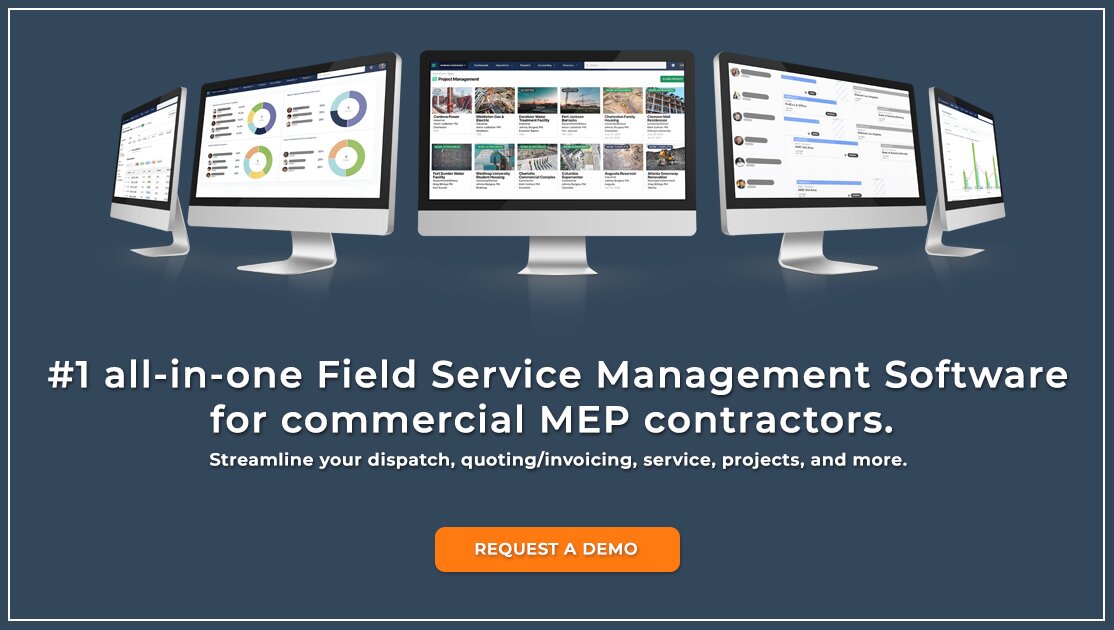Scheduling and routing software is a powerful tool that can help businesses of any size save time, money, and resources. This type of software provides users with the ability to quickly create efficient delivery routes for their vehicles or drivers. It also helps automate complex tasks such as dispatching orders, assigning routes to drivers and tracking deliveries in real-time. By optimizing route planning, scheduling and routing software enables businesses to make the most out of their existing transportation resources while providing exceptional customer service. With the right scheduling and routing software, companies can streamline their operations and increase efficiency while reducing costs at the same time.
Moreover, when it comes to sales teams, this type of software helps them assign tasks more effectively as well as keep track of customer orders, deliveries and other activities. With all the data that is gathered through this software, teams are able to make informed decisions quicker and with more accuracy. This can lead to higher levels of efficiency, productivity and ultimately better customer satisfaction.
What are the key features of Scheduling and Routing Software?
Scheduling and routing software typically includes a range of features that enable businesses to optimize their operations. These may include route optimization, multi-stop scheduling, order tracking, driver tracking, turn-by-turn navigation, customer notifications, delivery alerts and more.
Route optimization is one of the most important features of this type of software as it allows users to optimize routes for maximum efficiency. This feature can help users reduce travel times and fuel costs while increasing customer satisfaction. Multi-stop scheduling also makes it easy to assign multiple orders to different drivers or vehicles in a single trip.
Order tracking helps ensure that all orders are delivered on time and accurately by providing real-time updates about the status of deliveries and pickups. Driver tracking, on the other hand, provides users with detailed information about driver performance such as speed and route duration.
Turn-by-turn navigation aids drivers in navigating unfamiliar areas by providing them with turn-by-turn directions to their destination. Customer notifications allow businesses to keep customers informed of their delivery status while also providing a better customer experience overall. Finally, delivery alerts notify users when deliveries have been completed or when they are running late.
What are the benefits of using Scheduling and Routing Software?
Using scheduling and routing software can provide businesses with a range of benefits including improved efficiency, cost savings, and customer satisfaction. By optimizing routes and scheduling multiple orders at once, businesses can reduce travel times and fuel costs while increasing customer satisfaction. Additionally, the data collected through this type of software can help teams make more informed decisions quicker and with greater accuracy.
Moreover, scheduling and routing software can also provide teams with detailed insights into driver performance as well as customer notifications to keep them updated on their delivery status. This allows businesses to ensure that all orders are delivered on time and accurately while providing a better overall customer experience. Finally, by automating complex tasks such as dispatching orders and tracking deliveries in real-time, scheduling and routing software enables businesses to streamline operations and increase efficiency while reducing costs at the same time.
What are the disadvantages of using Scheduling and Routing Software?
While scheduling and routing software can provide businesses with a range of benefits, there are also some potential drawbacks to consider. For example, this type of software requires an upfront cost for installation, maintenance and training. Additionally, the complexity of the system may lead to user errors or slow responses when using it.
Furthermore, setting up rules for route optimization can be difficult and time-consuming as well. Lastly, scheduling and routing software can only be used if all vehicles have GPS tracking devices installed in them which could incur additional costs.
Overall, while there may be some disadvantages associated with the use of scheduling and routing software, these can be outweighed by the many advantages that it provides to businesses looking to streamline their operations and increase efficiency. With the right configuration, businesses can take advantage of all the features and benefits this type of software offers while minimizing any potential drawbacks.
What are the different types of Scheduling and Routing Software?
There are a number of different types of scheduling and routing software available, including route optimization services, order tracking systems, driver tracking platforms, and turn-by-turn navigation solutions.
Route optimization services enable businesses to calculate and optimize routes for maximum efficiency by taking into account factors such as travel times and fuel costs. Order tracking systems provide users with real-time updates on the status of deliveries while also ensuring that all orders are delivered on time and accurately. Driver tracking platforms allow businesses to track drivers’ performance such as speed and route duration. Finally, turn-by-turn navigation solutions provide drivers with detailed directions to their destination in unfamiliar areas.
By using scheduling and routing software correctly, businesses can take advantage of all of the features and benefits that it provides to streamline operations, increase efficiency, reduce costs and improve customer service.
What are the different licensing options for Scheduling and Routing Software?
Scheduling and routing software typically comes with a variety of licensing options. Generally, these software packages are offered as either an on-premise or cloud-based solution. On-premise solutions require businesses to invest in hardware and set up their own dedicated server for the software, while cloud-based solutions allow businesses to access the software from any device via an internet connection.
Additionally, some scheduling and routing software vendors offer subscription models which are more affordable than purchasing the license outright. This type of arrangement allows businesses to pay a monthly fee based on usage or the number of users instead of one large upfront cost. Finally, some vendors also provide special discounts for non-profit organizations or educational institutions looking to purchase licenses for their teams.
Therefore, businesses should carefully consider the different licensing options available for scheduling and routing software in order to choose the best solution for their needs. Choosing the right licensing option can help businesses save money while still taking advantage of all the features and benefits provided by this type of software.
Are there any restrictions or compliance requirements for Scheduling and Routing Software?
One of the most important aspects to consider when using scheduling and routing software is compliance with applicable laws, regulations and standards. Depending on the geographical location of a business, certain compliance requirements may apply to their use of this type of software. For instance, businesses in the European Union must comply with GDPR (General Data Protection Regulation) which places restrictions on how personal data is handled and stored.
Additionally, some vendors may also have their own specific terms and conditions that businesses must adhere to when using their software. These include issues such as data security, privacy protection, customer support and maintenance warranties. Therefore, businesses should familiarize themselves with any relevant compliance requirements or restrictions that may apply before purchasing or using scheduling and routing software. This will help ensure that their use of the software complies with applicable laws and regulations.
Are there any best practices for using Scheduling and Routing Software?
When using scheduling and routing software, businesses should follow certain best practices to ensure maximum efficiency and accuracy. Some of these include regularly reviewing route optimization parameters such as travel times and fuel costs in order to create optimal routes; ensuring that drivers are properly trained on how to use the system; monitoring driver performance metrics such as speed and route duration; setting up notifications for orders or deliveries that have not been completed on time; and providing customer support services such as live chat or phone call options. Following these best practices can help businesses maximize the benefits of their scheduling and routing software while minimizing costs and improving customer service.
In conclusion, businesses should carefully consider the different licensing options, compliance requirements and best practices for using scheduling and routing software in order to choose the best solution for their needs. Making sure that these items are taken into consideration will help ensure that businesses are able to take full advantage of all the features and benefits provided by this type of software.
Are there any alternatives to Scheduling and Routing Software?
Although scheduling and routing software is an effective solution for managing resource assignments, businesses may also want to consider alternative options. For instance, some organizations may choose to use manual methods such as paper forms or spreadsheets in order to plan routes and assign resources. This type of system can be useful for smaller operations with less frequent needs but it can become cumbersome if the business grows or has more complex assignments to manage.
Other alternatives include using third-party services such as freelancers or contractors who specialize in route optimization and scheduling. These services are generally more expensive than software solutions and do not offer the same level of automation or scalability. Additionally, there are also mobile apps which provide basic route planning capabilities but may not have all the features of dedicated scheduling and routing software.
In conclusion, businesses should assess their individual needs and preferences when deciding which option is best for them. Depending on the size and complexity of their operations, different solutions may be more suitable than others. Ultimately, the right solution will depend on the company’s specific requirements.
What is the future or trends for Scheduling and Routing Software?
The future of scheduling and routing software lies in the development of ever more sophisticated algorithms and features that better accommodate changing customer demands. As customer expectations continue to increase, businesses will need to use more advanced AI-driven systems to keep up with the competition.
In addition, machine learning capabilities are becoming increasingly important for scheduling and routing software as they allow systems to self-tune based on past successes or failures. This type of automation can help significantly reduce manual effort while also providing more accurate route optimization results.
Finally, there has also been an increasing focus on using data insights from previous trips and deliveries in order to improve both the efficiency and effectiveness of the scheduling process. With access to real-time information such as weather patterns, traffic delays and road conditions, businesses can adjust their routes accordingly to maximize the efficiency of their operations.
As technology continues to advance, it is likely that these systems will become even more sophisticated in order to better meet customer needs and expectations. In order to remain competitive, businesses should stay on top of these trends and ensure they are using the most up-to-date solutions available.
What are people saying about Scheduling and Routing Software?
Overall, people are generally positive about the potential benefits of scheduling and routing software. Many businesses report that using such a system has improved both their efficiency and cost savings by providing them with better visibility into their operations.
The most common complaints have to do with implementation issues or the complexity of some systems. Some users express frustration with setting up new routes or managing multiple jobs at once, while others note that certain features can be difficult to use due to outdated user interfaces or lack of technical support.
Generally speaking, though, many businesses find that scheduling and routing software is worth the investment in terms of increased operational efficiency and cost savings. As long as they take the time to select the right solution for their needs and ensure proper implementation, these solutions can be highly beneficial for any business.
As long as businesses take the time to select the right solution for their needs and ensure proper implementation, these solutions can provide significant benefits. In order to remain competitive in the future, it is important that businesses stay up-to-date on the latest trends and technologies in this area in order to make sure they have access to the most advanced tools available.



